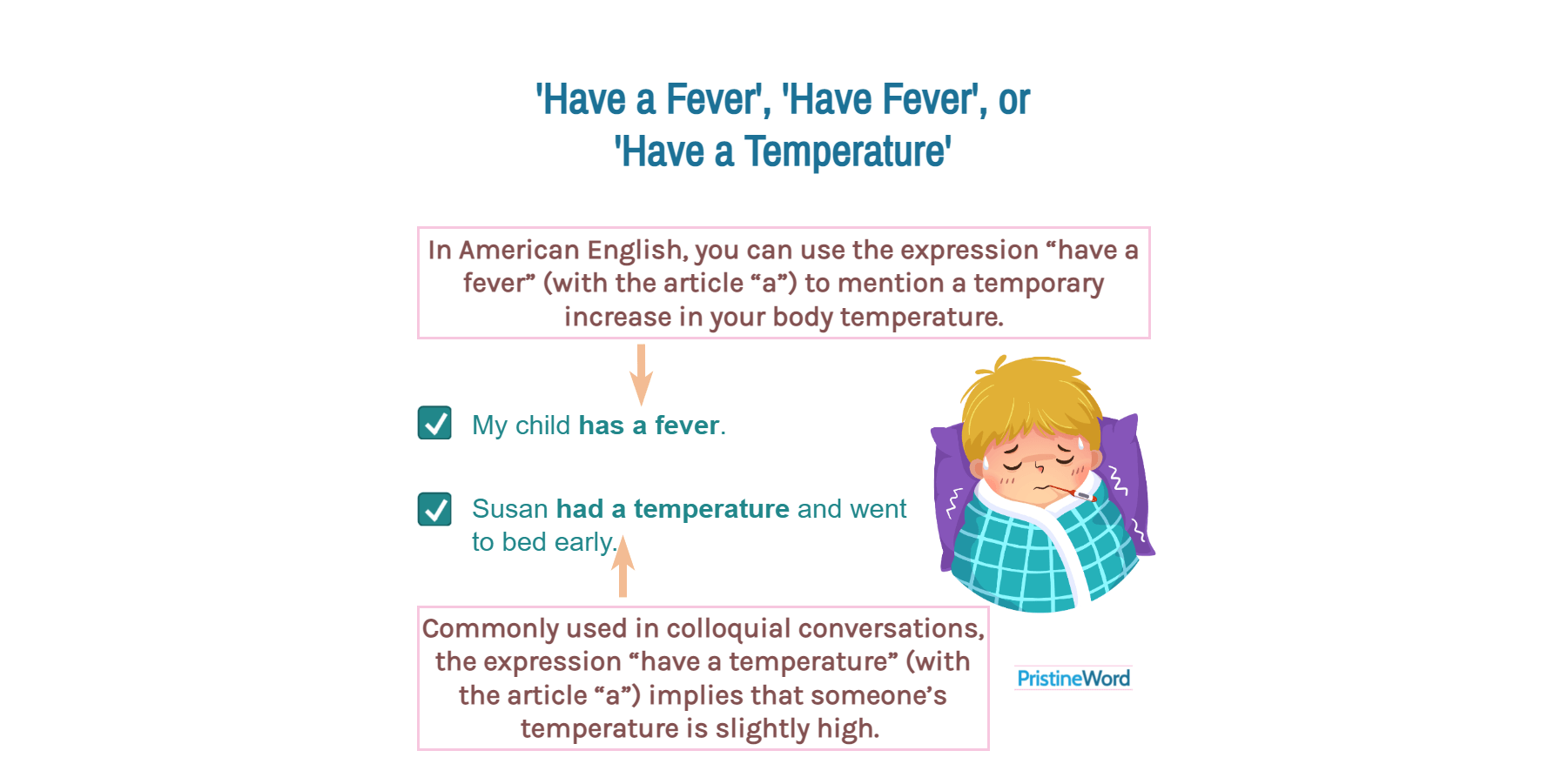In American English, you can use the expression “have a fever” (with the article “a”) to mention a temporary increase in your body temperature.
In American English, you can use the expression “have a fever” (with the article “a”) to mention a temporary increase in your body temperature.
My child has a fever.
In British English, you can drop the determiner.
My child has fever.
Commonly used in colloquial or familiar conversations, the expressions “have a temperature” or “running a high temperature” (both with the article “a”) imply that someone’s temperature is slightly high. When the temperature is very high, we normally use the term “fever”.
Susan had a temperature and went to bed early.
1. Have Fever or Have a Fever
In American English, "fever" is a countable noun, so you can use its plural form (fevers).
She had three fevers last year.
Singular countable nouns take an article (a, an, the) or another determiner (my, your, his, this, that, etc.).
I think I might have a fever.
Generally, a fever is a sign that the body is fighting an infection.
My fever is too high.
You can also use a possessive noun.
We need to bring down Olivia’s fever.
Understanding a child’s fever is important to manage it properly.
Similarly, when referring to a definite or specific group of fevers, we need a determiner to identify or quantify the noun (the, some, these, many, several, two, three, etc.).
Some fevers can’t be explained.
Many fevers are associated with chills and sweats.
Most fevers are caused by infections.
But omit the determiner when using the noun “fever” in a general sense.
Fevers happen at different severity levels and for a variety of reasons.
Follow the same strategy with other related expressions, such as “treat a fever”, “experience a fever”, “bring down a fever”, “let the fever”, etc.
Should you treat a fever or let the fever run its course?
In British English, “fever” can be both countable and uncountable; thus, you can omit the determiner before the noun.
Drink plenty of liquids when you have fever.
When you have fever, your body needs to rest and repair.
Drop the article before the name of a symptom when using the singular form in a general sense.
Fever is a rise in body temperature.
There are more symptom names that require a/an, for example:
- Allergy
- Backache (The article can be omitted in British English.)
- Cold
- Cough
- Cramp/Muscle Cramp (The article can be omitted in British English.)
- Earache (The article can be omitted in British English.)
- Headache
- Heart attack
- Runny nose
- Sore throat
- Stomachache (The article can be omitted in British English.)
- Stroke
- Toothache (The article can be omitted in British English.)
2. Have a Temperature vs. Have a Fever
In everyday English, when someone’s temperature is just high (somewhat above normal), we typically use the expression “have a temperature” (with the article “a”) or “be running a high temperature”.
My child has a temperature.
Alice has a temperature and has gone to bed.
However, when the temperature is significant, most people use the term “fever”.
Barbara stayed home because she had a fever.

